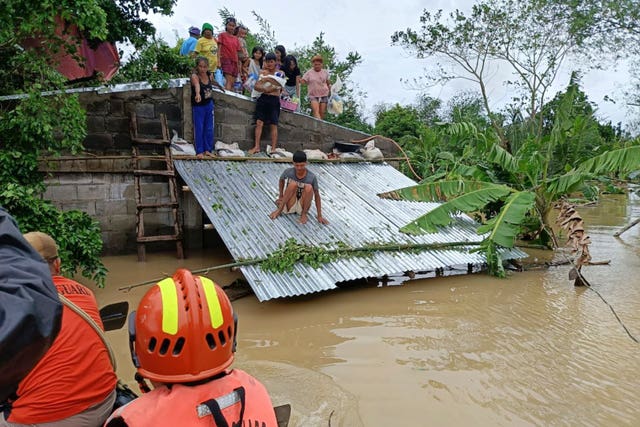The government closed schools and offices – except those urgently needed for disaster response – for a second day across the main island of Luzon to protect millions of people after Tropical Storm Trami slammed into the country’s northeastern Isabela province after midnight.
The storm blew over the town of Aguinaldo in the mountainous province of Ifugao after dawn with sustained winds of up to 59 mph and gusts of up to 99 mph. It was forecast to enter the South China Sea later Thursday, according to government forecasts.

Most of the dead drowned in the hard-hit Bicol region, southeast of Manila, and nearby Quezon province, but the toll is expected to rise as towns and villages isolated by floods and roads blocked by landslides and fallen trees manage to send reports, police and provincial officials said.
In the six-province Bicol region, at least 20 people died, including seven in Naga City, which was inundated by flash floods as Trami approached on Tuesday, dumping more than two months’ worth of rain in just 24 hours amid high temperatures, regional chief Police Brigadier General Andre Dizon and other officials said.
While thousands of villagers who were trapped in the floods were rescued by government forces, many others had to be rescued on Thursday in the Bicol region, including some on rooftops.

About 1,500 police personnel have been deployed for disaster mitigation work.
“We can’t save them all at once because there are so many and we need extra speedboats,” Mr. Dizon told The Associated Press.
“We are looking for ways to get food and water to those who were trapped but could not be evacuated immediately.”
Flash floods swept away and submerged cars in some parts of Naga City, while mudflows from Mayon, one of the country’s 24 active volcanoes, in nearby Albay province swallowed several vehicles, Mr. Dizon said.
Stormy weather remained in the region, hampering relief efforts, officials said.
The government’s disaster mitigation agency said more than two million people were affected by the storm, including 75,400 villagers who were driven from their homes and sheltering in safer ground.
